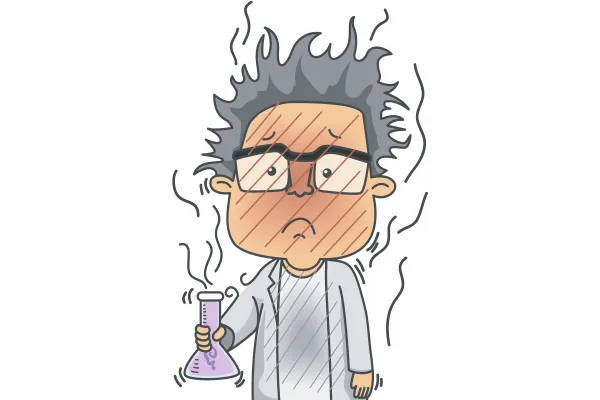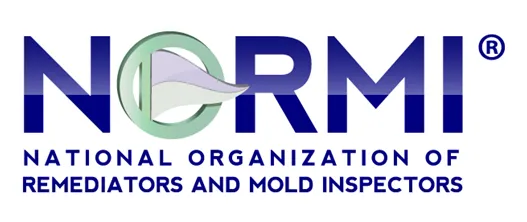
Understanding the Sources of Combustion Products and Their Impact on Indoor Air Quality
Introduction: Indoor air quality is a crucial aspect of maintaining a healthy living environment. Among the various contributors to indoor air pollution, combustion products play a significant role. These byproducts are released during the burning of various fuels, and their impact on indoor air quality can have serious consequences for human health. This article aims to shed light on the sources of combustion products, the pollutants they release, and strategies to mitigate their effects.
Apart from secondhand smoke, combustion products stem from various sources, including:
Unvented kerosene and gas space heaters
Woodstoves
Fireplaces
Gas stoves
These sources release significant pollutants such as:
Carbon monoxide
Nitrogen dioxide
Particulate matter
Unvented kerosene heaters, in particular, may also produce acid aerosols. Improperly installed or maintained chimneys and flues, along with cracked furnace heat exchangers, contribute to the release of combustion gases and particles. Fireplaces and woodstoves without dedicated outdoor air supplies may experience "back-drafting," allowing pollutants to flow from the chimney into the living space, especially in weatherized homes.
Common Sources of Combustion Products:
Cooking Appliances:
Gas stoves and ovens are prevalent sources of combustion products in homes. Incomplete combustion of natural gas can release carbon monoxide (CO) and nitrogen dioxide (NO2) into the air.
Heating Systems:
Combustion-based heating systems, including furnaces and space heaters, can emit pollutants such as carbon monoxide, nitrogen oxides, and particulate matter into indoor spaces.
Fireplaces and Wood-Burning Stoves:
While fireplaces and wood-burning stoves provide warmth and ambiance, they release a range of pollutants, including carbon monoxide, particulate matter, and volatile organic compounds (VOCs).
Tobacco Smoke:
Smoking tobacco products indoors introduces a significant amount of combustion products, including carbon monoxide, formaldehyde, and numerous harmful chemicals found in tobacco smoke.
Automobile Exhaust:
If garages are attached to homes, combustion products from vehicle exhaust can infiltrate indoor spaces. Carbon monoxide is a primary concern in such scenarios.
Health Impacts of Combustion Products:
Carbon Monoxide (CO):
CO is a colorless, odorless gas that can cause headaches, dizziness, nausea, and, in severe cases, lead to death. It hinders the body's ability to transport oxygen.
Nitrogen Dioxide (NO2):
NO2, produced during combustion, can irritate the respiratory system and exacerbate conditions such as asthma. Long-term exposure may contribute to respiratory diseases.
Particulate Matter (PM):
Fine particles released during combustion can penetrate the respiratory system, causing or worsening respiratory and cardiovascular issues. PM is categorized based on size, with PM2.5 and PM10 being particularly concerning.
The health effects of combustion products vary based on the specific pollutants involved. Carbon monoxide, a colorless and odorless gas, hampers oxygen delivery throughout the body. High concentrations can lead to symptoms such as headaches, dizziness, weakness, nausea, confusion, disorientation, fatigue (in healthy individuals), and increased chest pain (in people with chronic heart disease). Carbon monoxide poisoning symptoms are sometimes mistaken for the flu or food poisoning. Vulnerable groups like fetuses, infants, the elderly, and those with anemia or a history of heart or respiratory disease are particularly sensitive to carbon monoxide exposure.
Nitrogen dioxide, a reddish-brown gas with an irritating odor, causes irritation in the eyes, nose, and throat, along with shortness of breath after exposure to high concentrations. Prolonged exposure or high concentrations of nitrogen dioxide may increase the risk of respiratory infections and contribute to the development of lung diseases like emphysema, especially in repeated exposures. Individuals at particular risk include children and those with asthma or other respiratory conditions.
Particles released during incomplete fuel combustion can lodge in the lungs, causing irritation or damage to lung tissue. Some pollutants, including cancer-causing agents like radon and benzo(a)pyrene, attach to small inhaled particles, penetrating deep into the lungs and posing additional health risks.
Mitigating Strategies:
Proper Ventilation:
Ensure adequate ventilation in cooking areas and install exhaust fans to remove pollutants. Regularly service heating systems and ensure chimneys and flues are functioning correctly.
Use Efficient Appliances:
Opt for energy-efficient and well-maintained combustion appliances to minimize emissions. Consider upgrading to appliances with cleaner combustion technologies.
No Smoking Indoors:
Enforce a strict no-smoking policy indoors to eliminate the release of harmful combustion products from tobacco smoke.
Alternative Heating Options:
Explore alternative heating options that produce fewer pollutants, such as electric or infrared heaters.
Regular Maintenance:
Schedule regular maintenance for combustion appliances to ensure optimal performance and minimize emissions.
Minimize exposure to combustion products in your home by implementing these precautions:
Unvented Space Heaters:
Operate fuel-burning unvented space heaters with caution.
Use unvented kerosene or gas space heaters according to the manufacturer's guidelines, especially regarding fuel type and proper adjustment.
If a persistent yellow-tipped flame is observed, it indicates maladjustment and increased pollutant emissions.
While the space heater is in use, open a door from the room to the rest of the house and slightly open a window.
Gas Cooking Stoves and Ranges:
Install and use exhaust fans over gas cooking stoves and ranges.
Keep burners properly adjusted to minimize pollutant emissions.
Using a stove hood with a fan vented outdoors significantly reduces pollutant exposure during cooking.
Ensure proper adjustment by maintaining a blue flame tip. Avoid using a gas stove to heat your home.
Woodstoves:
Minimize woodstove emissions by choosing properly sized new stoves certified to meet EPA emission standards.
Ensure tight-fitting doors in old woodstoves.
Use only aged or cured (dried) wood and follow the manufacturer's guidelines for starting, stoking, and extinguishing fires.
Avoid burning pressure-treated wood due to the chemicals used.
When replacing gaskets, refer to guidelines to prevent asbestos problems, as some old gaskets contain asbestos.
Central Air Handling Systems:
Have central air handling systems, including furnaces, flues, and chimneys, inspected annually.
Properly repair any cracks or damaged parts in the system.
Blocked, leaking, or damaged chimneys or flues can release harmful combustion gases and particles, including fatal concentrations of carbon monoxide.
Maintenance of Air Handling Systems:
Follow all recommended service and maintenance procedures provided by the manufacturer.
Change filters regularly based on the manufacturer's instructions, typically monthly or bi-monthly during periods of use.
Even new furnaces require proper maintenance to prevent corrosion and leakage of combustion gases, including carbon monoxide.
Conclusion: Understanding the sources of combustion products and their potential impact on indoor air quality is crucial for creating a healthier living environment. Implementing mitigation strategies, fostering awareness, and adopting cleaner technologies are key steps toward reducing exposure to harmful combustion byproducts and promoting overall well-being.






